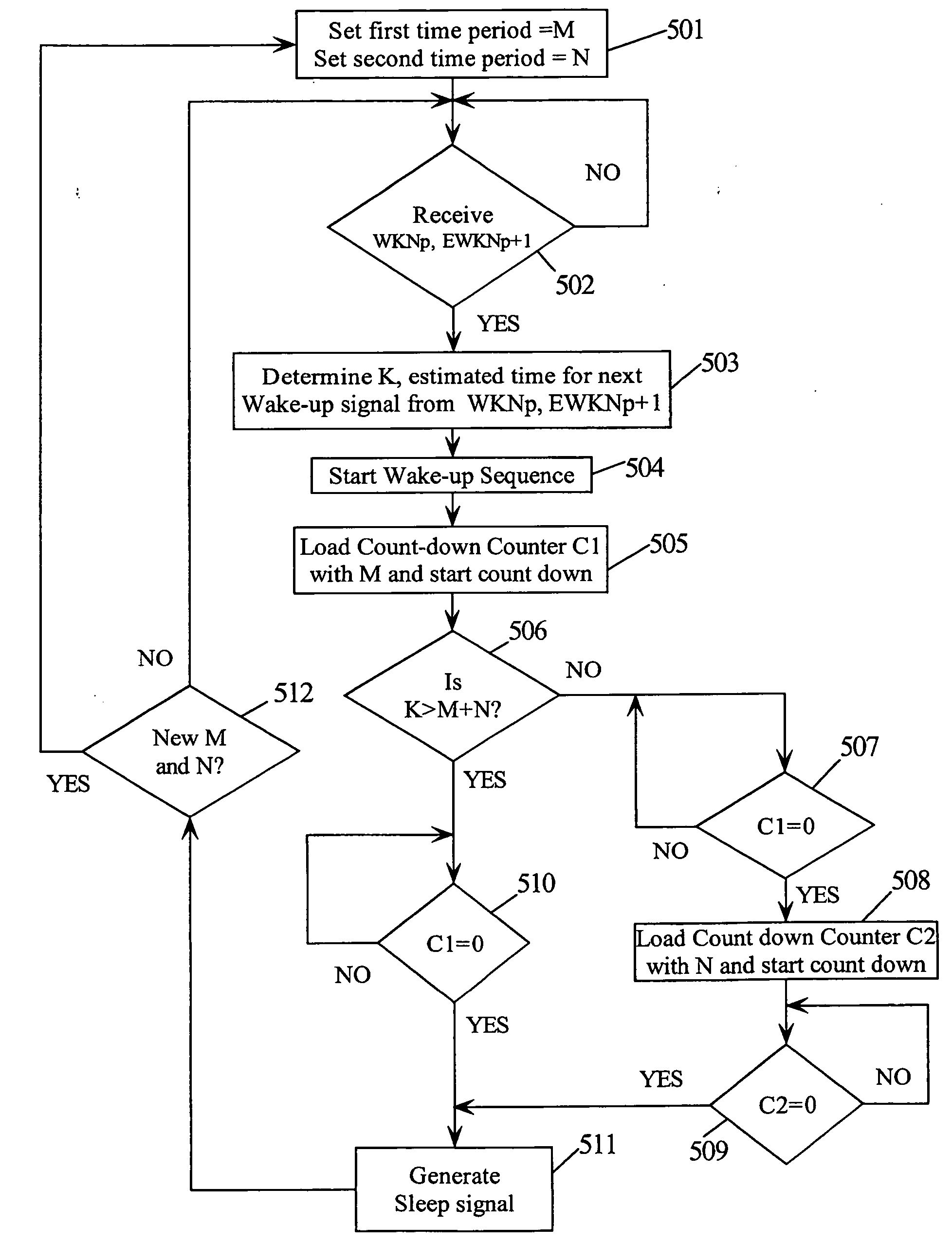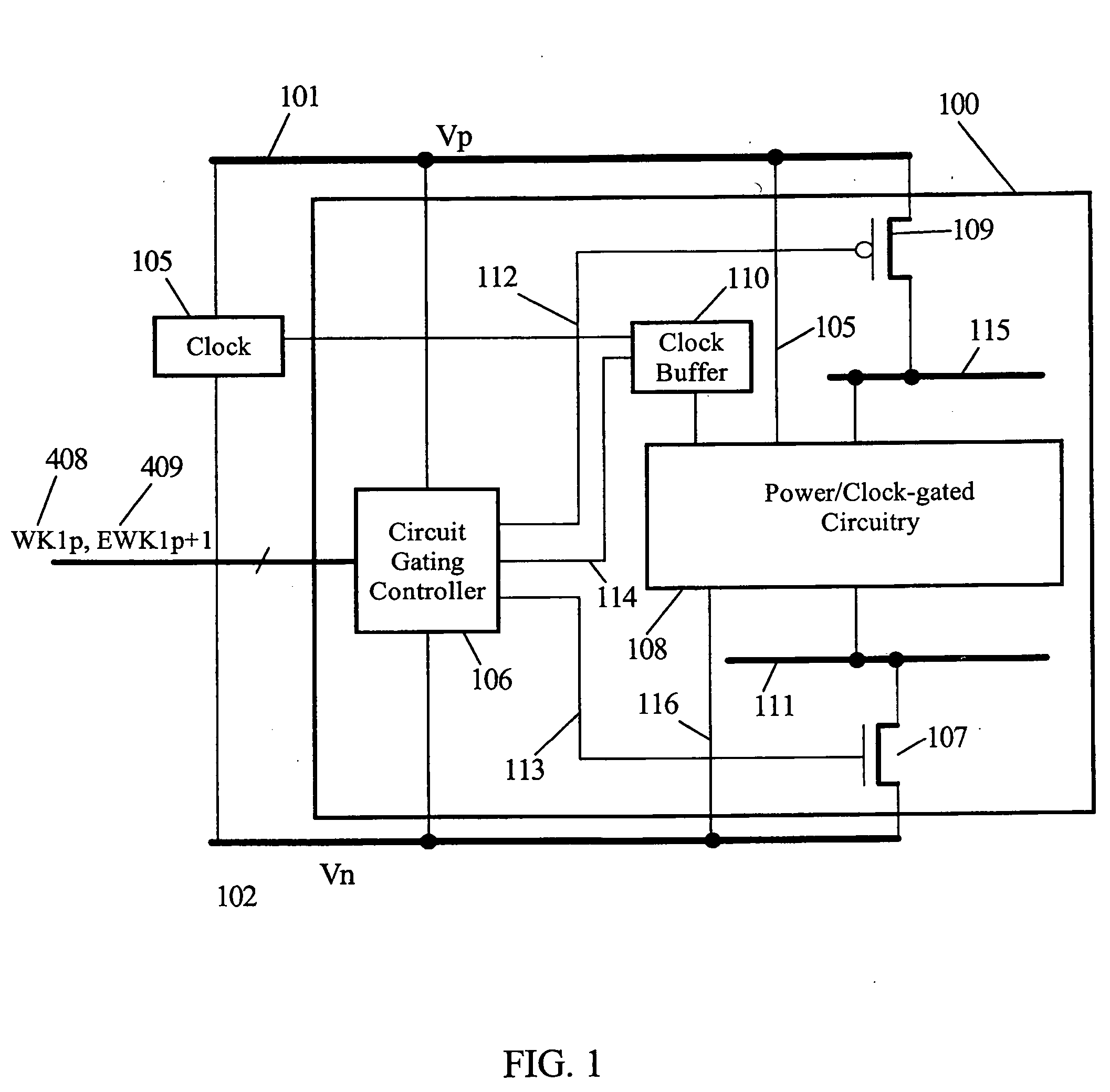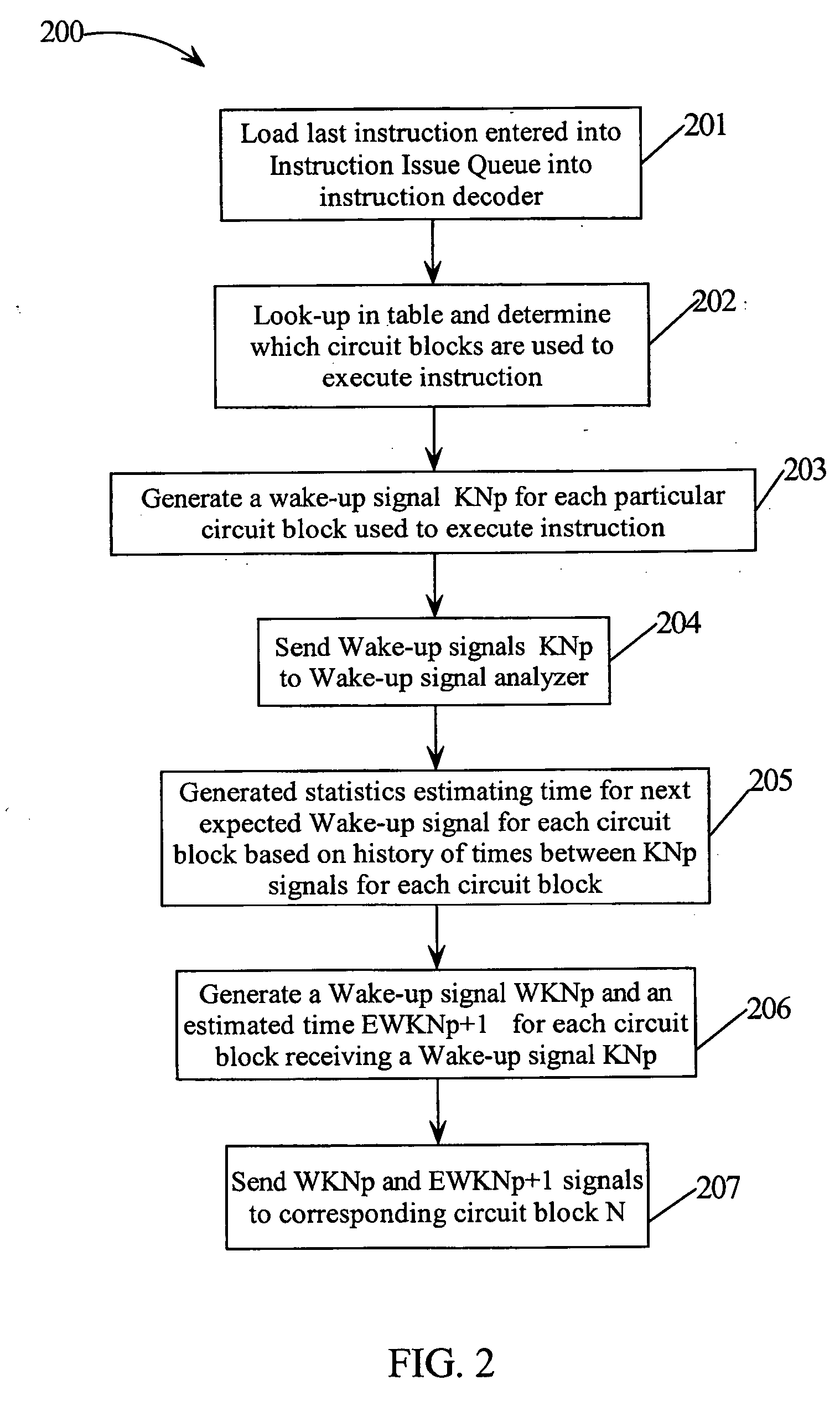Dynamic power and clock-gating method and circuitry
a technology of dynamic power and clock-gating, applied in the field of complementary metal oxide semiconductor (cmos) circuits, can solve the problems of not achieving an adequate reduction of leakage power dissipation, affecting the production efficiency of small devices, and a significant portion of power dissipation, so as to reduce static leakage power and reduce dynamic power dissipation
- Summary
- Abstract
- Description
- Claims
- Application Information
AI Technical Summary
Benefits of technology
Problems solved by technology
Method used
Image
Examples
Embodiment Construction
[0032] In the following description, numerous specific details are set forth to provide a thorough understanding of the present invention. However, it will be obvious to those skilled in the art that the present invention may be practiced without such specific details. In other instances, well-known circuits may be shown in block diagram form in order not to obscure the present invention in unnecessary detail. For the most part, details concerning timing, and the like have been omitted inasmuch as such details are not necessary to obtain a complete understanding of the present invention and are within the skills of persons of ordinary skill in the relevant art.
[0033] In the following, power supply voltage potentials are distributed to circuits on circuit traces or printed wires which may be referred to interchangeably as power supply rails, grids or buses. Power supply voltage potentials are coupled to the buses or grids to activate various logic circuitry. The power supply voltage...
PUM
 Login to View More
Login to View More Abstract
Description
Claims
Application Information
 Login to View More
Login to View More - R&D
- Intellectual Property
- Life Sciences
- Materials
- Tech Scout
- Unparalleled Data Quality
- Higher Quality Content
- 60% Fewer Hallucinations
Browse by: Latest US Patents, China's latest patents, Technical Efficacy Thesaurus, Application Domain, Technology Topic, Popular Technical Reports.
© 2025 PatSnap. All rights reserved.Legal|Privacy policy|Modern Slavery Act Transparency Statement|Sitemap|About US| Contact US: help@patsnap.com



